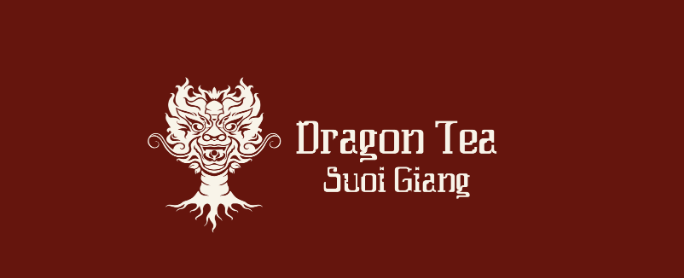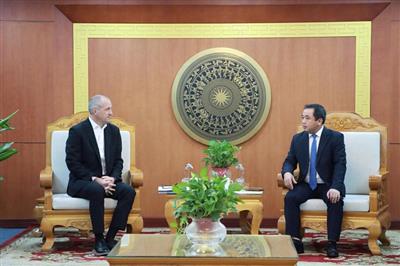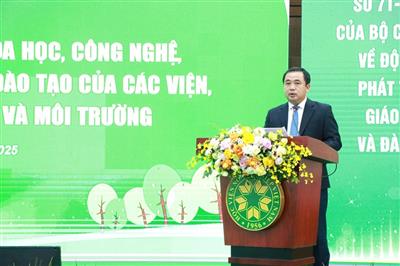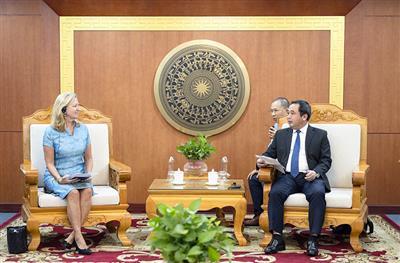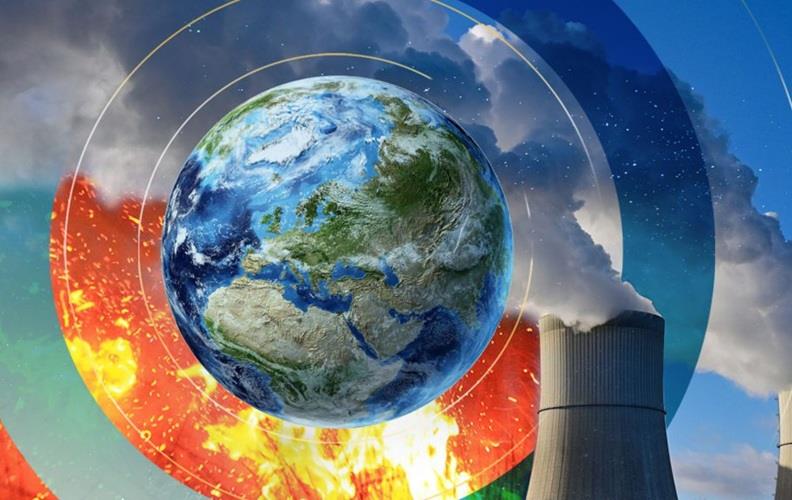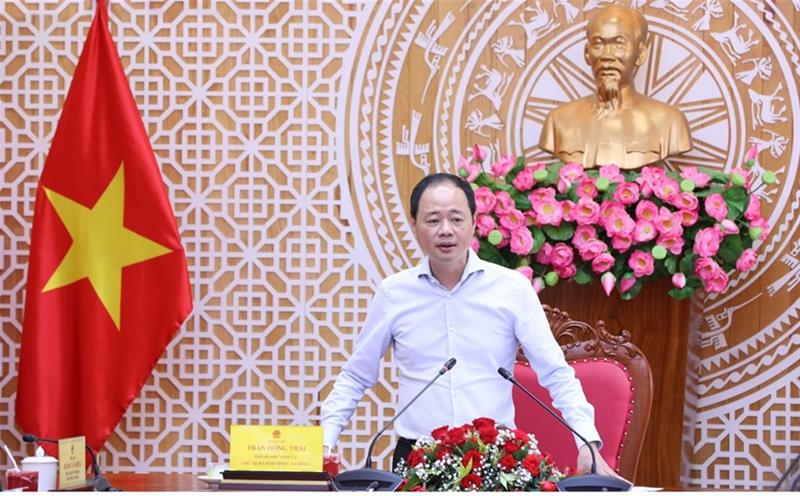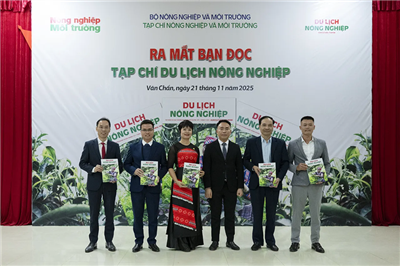
Rice carbon credits: A green revolution in the fields
27/10/2025TN&MTFrom low-emission rice farming to carbon finance, Quang Tri province is cultivating a new ecosystem in which rice becomes a green asset, contributing to Vietnam’s green growth strategy and its adaptation to climate change. Rice is not only a staple crop ensuring national food security but also a key driver of Vietnam’s strategy for green growth and climate resilience. Quang Tri is now piloting a project on rice-field carbon credits with promising early outcomes.
To learn more about this initiative, the Agriculture and Environment Magazine spoke with Ms. Nguyen Hong Phuong, Deputy Director of the Quang Tri Department of Agriculture and Environment, about the province’s progress in piloting carbon credits from rice cultivation.

Ms. Nguyen Hong Phuong, Deputy Director of the Quang Tri Department of Agriculture and Environment, inspects a pilot model of carbon credit generation in rice fields
Interviewer: Quang Tri is moving from a focus on food security toward green and circular agriculture. Carbon credits from rice farming not only increase farmers’ incomes but also contribute to the national net-zero strategy. Could you share more about this approach?
Ms. Nguyen Hong Phuong: Quang Tri is finalizing its carbon credit model for rice production, with plans to scale it up across the province. The local agricultural sector now sees rice not merely as food, but as a tool for national emission reduction. The pilot project has shown positive signs. Irrigation water use has fallen by about 25–30%, energy costs for pumping have decreased, and crop health has remained stable compared with conventional methods.
Project data indicate that each hectare of rice cultivated under the Alternate Wetting and Drying (AWD) method can reduce 3–5 tons of CO₂ equivalent (tCO₂eq) per hectare per season, generating the same amount of tradable carbon credits. If the AWD method is applied on 1,177 hectares of rice in Quang Tri’s 2025 summer–autumn season, it could make a meaningful contribution to local policies on green agriculture.
Under the international Gold Standard, every ton of CO₂eq reduced can generate one carbon credit for trading. With market prices ranging from USD 5 to USD 50 per credit, depending on standard and region, the potential income from low-emission rice is considerable. From production to carbon finance, Quảng Trị is shaping a new ecosystem where rice becomes a green asset supporting the nation’s green growth and climate goals.
By 2030, the project aims to expand to at least 5,000 hectares of rice under internationally recognized emission monitoring, with digitalized data collection down to individual farms. Despite challenges in digital infrastructure, local capacity, and carbon finance regulations, Quang Tri remains one of the first provinces to propose that the Ministry of Agriculture and Environment authorize a pilot for carbon credit verification in rice production.
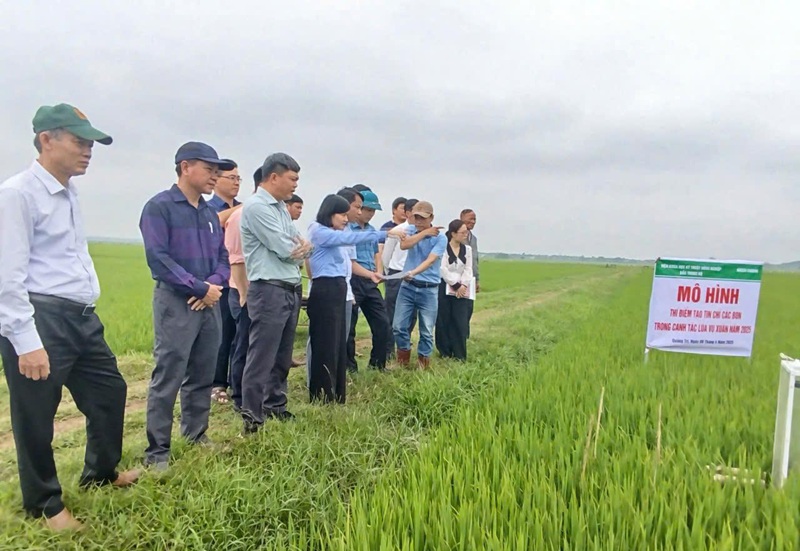
To promote these models as part of the support system for low-carbon agricultural production, Quang Tri province is developing an electronic database for digitalized farming logs, field parcel coding, and real-time process management
Interviewer: Quang Tri is one of the pioneering provinces applying low-emission rice farming. The province now has over 2,000 hectares aiming for international certification to access the carbon credit market. What results have been recorded so far?
Ms. Nguyen Hong Phuong: In the 2024–2025 winter–spring season, Quang Tri piloted the model on 60 hectares and evaluated it after harvest. Based on those results, we reported to the Provincial People’s Committee and proposed scaling up, with the goal that by 2030, half of the province’s rice area will join the program, about 5,000 to 10,000 hectares per year.
For the 2025 summer–autumn crop, the model is being implemented on over 2,000 hectares across the communes of Trieu Phong, Trieu Binh, Vinh Thuy, Truong Ninh, Ninh Chau, and Quang Ninh. Initial results are promising: water savings, reduced production costs, fewer pests and diseases, while yield and quality remain stable.
Applying AWD irrigation has reduced methane (CH₄) emissions by 58–67%, equivalent to 3.0–3.3 tons of CO₂ avoided per hectare. More importantly, farmers are shifting their mindset, seeing long-term benefits from the carbon market, showing that green, sustainable agriculture is entirely feasible in Quang Tri.
Interviewer: Each carbon credit represents one ton of CO₂ reduced or removed through improved practices. What opportunities does Quang Tri have to engage in international carbon markets through its rice fields?
Ms. Nguyen Hong Phuong: According to Clause 35, Article 3 of Vietnam’s Law on Environmental Protection (2020), “A carbon credit is a tradable certificate representing the right to emit one ton of carbon dioxide or its equivalent.” Farmers can think of it simply as a “reward” earned when their rice production emits less greenhouse gas.
With more than 102,000 hectares of rice cultivated annually, Quang Tri has significant potential to access international carbon markets. With well-organized production and transparent digital monitoring, Quang Tri rice can achieve international certification and enter carbon trading. This not only raises farmers’ incomes but also strengthens the province’s agricultural position in the global green transition.
That said, turning emission reductions into verified, tradable carbon credits is a long and technical process that requires careful preparation and coordination. Emissions can be reduced through soil preparation, choice of rice varieties, cultivation methods, and straw management after harvest. Among these, cultivation practices account for the largest reduction, up to 33%, when using AWD and efficient fertilizer management.
In Vietnam, two main rice cultivation frameworks compatible with AWD are the “1 must, 5 reductions (1P5G)” and the Sustainable rice platform (SRP) standards. AWD has already shown clear environmental and economic benefits, though still at a small scale.
Farmers also need to stop burning straw, which can cut emissions by another 15%, a challenge but also an opportunity. If methane reductions from rice fields are properly measured, they can be converted into carbon credits for trading in domestic or international markets, creating both profit and livelihood benefits for farmers.
Low-emission rice farming not only contributes to greenhouse gas reduction targets but also enhances the value and global reputation of Vietnamese rice.
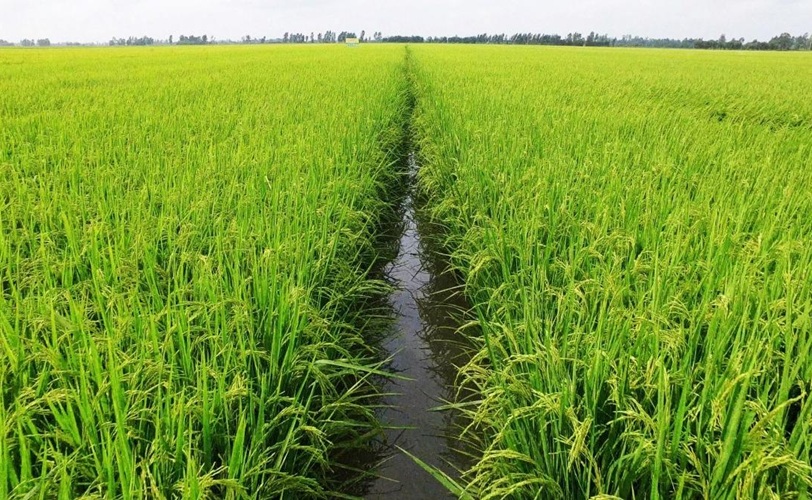
The local agricultural sector identifies rice not only as a staple food, but also as a “national tool for emission reduction"
Interviewer: Digital technology is key to making low-carbon rice farming successful. What technologies will Quang Tri apply to strengthen monitoring and verification?
Ms. Nguyen Hong Phuong: In the near future, we plan to introduce water-level sensors linked to automated irrigation valves, fertilizer monitoring devices, satellite imagery, and drones for real-time field observation. The collected data will be analyzed to ensure transparency, an essential requirement for international recognition of carbon credits. With digital tools, Quang Tri rice has the potential to enter the global carbon market directly.
At the same time, the province promotes the use of organic fertilizers and biological inputs, reduces agrochemical use, and applies advanced techniques such as AWD irrigation, agroforestry, and integrated farm–forest systems. Farmers are encouraged not to burn straw or crop residues after harvest.
We also focus on training and technology transfer so that farmers can master environmentally friendly cultivation methods and gain digital skills. Building farmers’ awareness and capacity to access the carbon market is essential. When Vietnam establishes its national carbon exchange, Quang Tri will be ready to participate.
Carbon credits are generated directly from the work of farmers and cooperatives, meaning they are also the primary beneficiaries. When responsibilities align with benefits, farmers will stay committed, and the “Quang Tri low-carbon rice” brand will have a sustainable presence both domestically and internationally.
To institutionalize this approach, the province is developing electronic farming records, digitized field mapping, and real-time production management systems to integrate low-carbon agriculture into its green growth framework.
Interviewer: Looking ahead, what are Quang Tri’s next steps to expand the low-emission rice model and carbon credit development?
Ms. Nguyen Hong Phuong: The province has piloted low-emission rice models in several key areas. Results show that AWD irrigation, balanced fertilizer use, and more organic fertilizer have reduced methane emissions by 50–60%, saved irrigation costs, and maintained stable yields and grain quality. This provides a solid basis for expansion.
Quang Tri is among Vietnam’s leading provinces in implementing low-emission rice. From the first 60 hectares in the former Vinh Lam and Xuan Ninh communes (now Vinh Thuy and Truong Ninh) many cooperatives have since joined. By the 2025 summer–autumn season, the area reached over 2,000 hectares and will continue to grow in the 2025–2026 winter–spring season.
In practice, introducing carbon credit mechanisms in rice farming is not overly complex, it mainly requires some adjustments to traditional practices. However, a functional irrigation system and relatively level fields are necessary.
Technically, farmers need to follow key mitigation measures such as AWD irrigation, efficient nitrogen management, the use of short-duration rice varieties, and most importantly, completely avoiding straw burning.
The model has already shown tangible benefits: reduced water use and costs, fewer pests and diseases, and stable yield and quality. Most importantly, farmers are adopting a longer-term perspective through participation in the carbon market—proof that green, sustainable agriculture is not only possible but practical in Quang Tri.
Interviewer: Thank you for taking the time to share these valuable perspectives with us!
Dinh Loan - Ngoc Huyen

